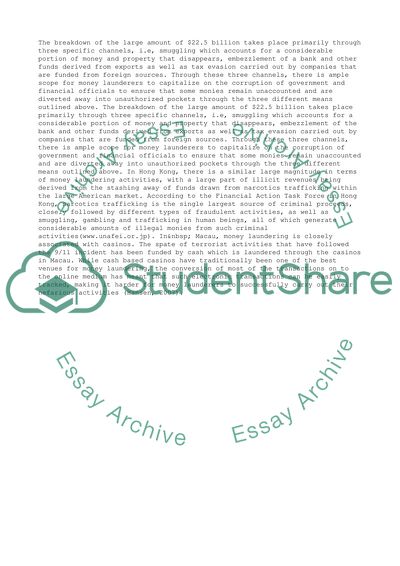Cite this document
(Money Laundering Dissertation Example | Topics and Well Written Essays - 3000 words, n.d.)
Money Laundering Dissertation Example | Topics and Well Written Essays - 3000 words. Retrieved from https://studentshare.org/business/1740271-on-the-discussion-of-china-hong-kong-macao-application-and-practice-of-anti-money-laundering
Money Laundering Dissertation Example | Topics and Well Written Essays - 3000 words. Retrieved from https://studentshare.org/business/1740271-on-the-discussion-of-china-hong-kong-macao-application-and-practice-of-anti-money-laundering
(Money Laundering Dissertation Example | Topics and Well Written Essays - 3000 Words)
Money Laundering Dissertation Example | Topics and Well Written Essays - 3000 Words. https://studentshare.org/business/1740271-on-the-discussion-of-china-hong-kong-macao-application-and-practice-of-anti-money-laundering.
Money Laundering Dissertation Example | Topics and Well Written Essays - 3000 Words. https://studentshare.org/business/1740271-on-the-discussion-of-china-hong-kong-macao-application-and-practice-of-anti-money-laundering.
“Money Laundering Dissertation Example | Topics and Well Written Essays - 3000 Words”, n.d. https://studentshare.org/business/1740271-on-the-discussion-of-china-hong-kong-macao-application-and-practice-of-anti-money-laundering.


